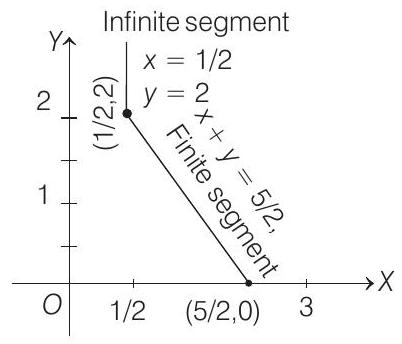Straight Line and Pair of Straight Lines 1 Question 53
53. For points
Let
Show Answer
Solution:
- NOTE
It is new method of representing distance between two points
Now, let
| [given] | ||
| [given] | ||
| Case I When |
Case I When
In this case, Eq. (i) becomes
Case II When
Now, Eq. (i) becomes
Case III When

Now, Eq. (i) becomes
Hence, no solution.
Case IV When
In this case, case I changes to
which is not possible.
Hence, the solution set is
$$
\begin{aligned}
& {(x, y) \mid x=12, y \geq 2} \cup{(x, y)} \mid \
& x+y=5 / 2,0<x<3,0
The graph is given in adjoining figure.






